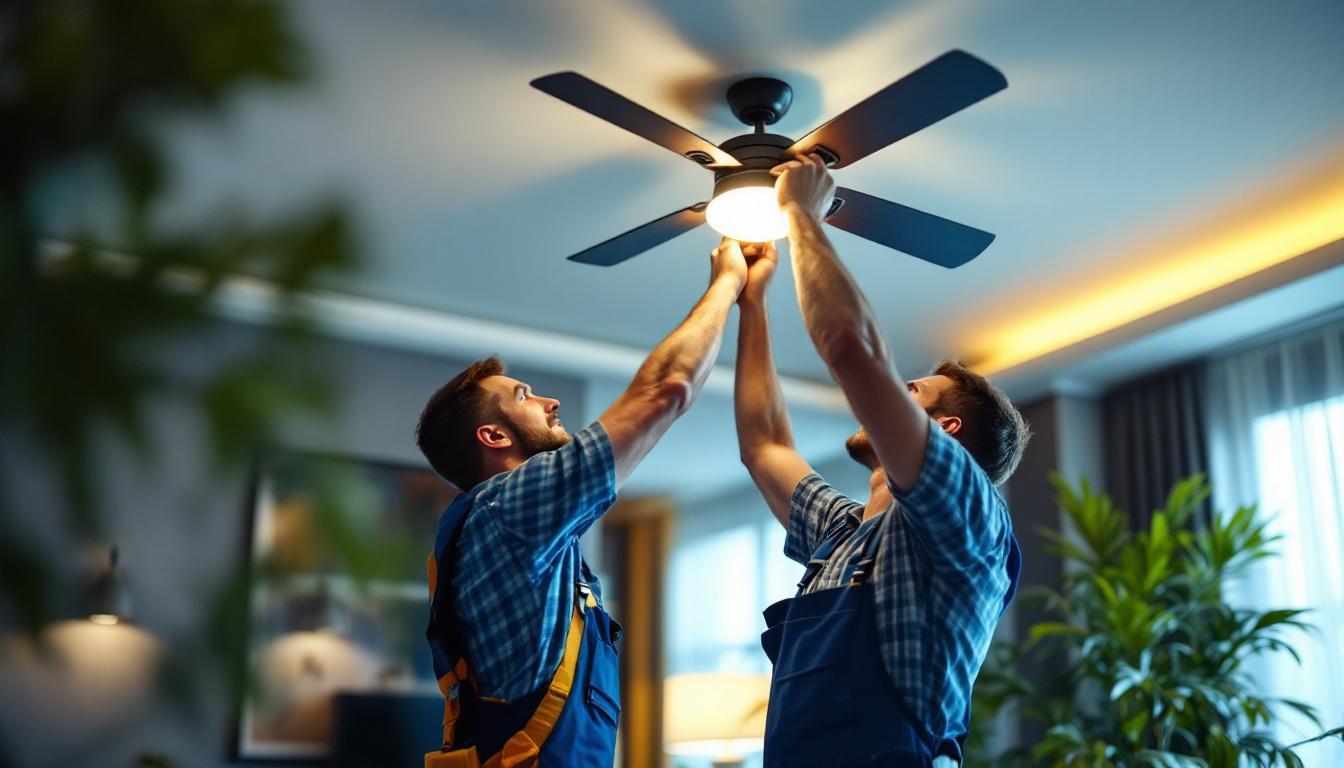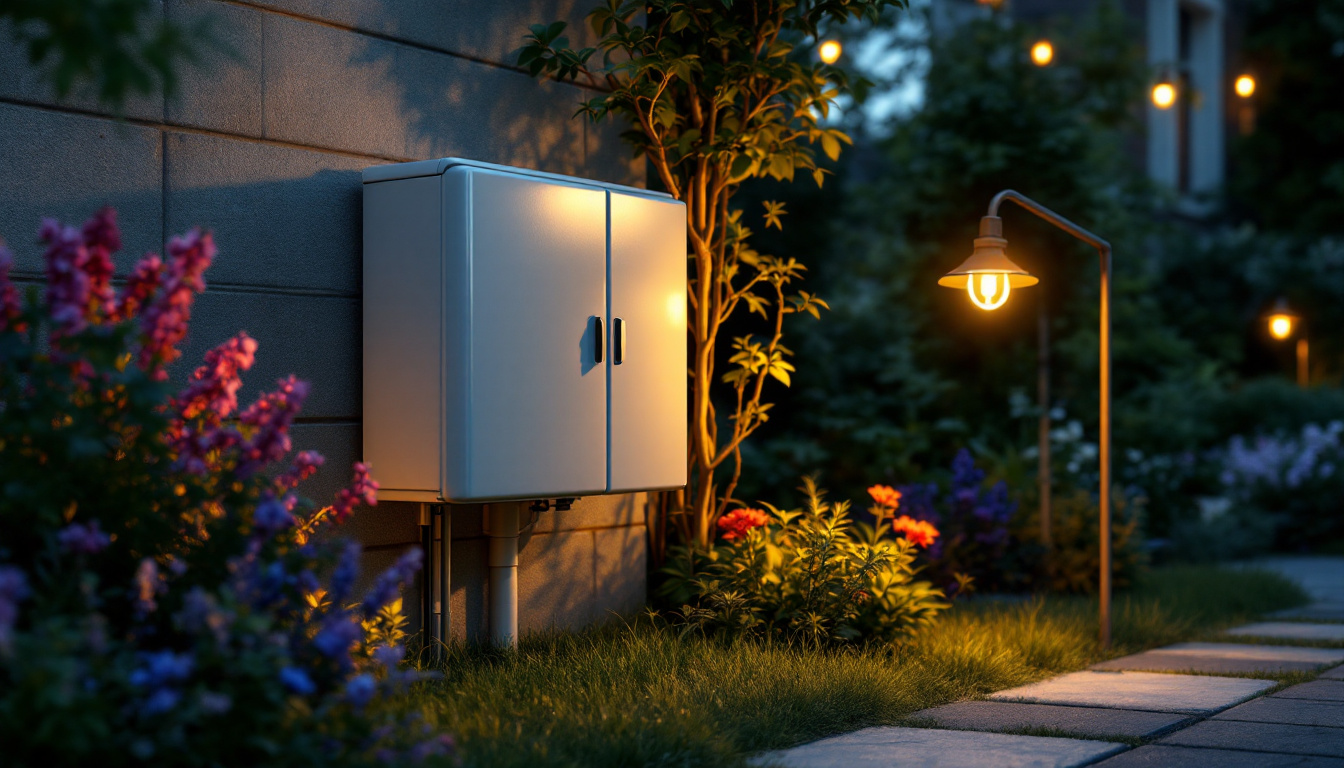
Ceiling fans have evolved far beyond their traditional function of air circulation. For lighting contractors, they represent a unique intersection of lighting and mechanical installation, requiring a nuanced understanding of both electrical wiring and aesthetic integration. As energy efficiency and smart home technology become increasingly important, ceiling fans offer opportunities to enhance comfort, lighting quality, and energy savings in residential and commercial projects.
Lighting contractors often encounter ceiling fans as part of comprehensive lighting solutions. Whether retrofitting an older home or installing fixtures in new construction, understanding the technical and design aspects of ceiling fans is essential. This knowledge not only streamlines installation but also improves client satisfaction by ensuring the fan and lighting components work harmoniously. Moreover, the aesthetic appeal of ceiling fans has grown significantly, with designs ranging from sleek modern styles to rustic, vintage looks that can complement any interior décor. This variety allows contractors to cater to diverse client preferences, making it crucial to stay updated on the latest trends and styles in ceiling fan design.
Modern consumers and builders seek fixtures that serve multiple purposes. Ceiling fans with integrated lighting are a prime example, combining illumination and airflow control in a single unit. According to industry surveys, a significant percentage of homeowners prioritize energy-efficient and multifunctional fixtures, making ceiling fans with LED lighting and smart controls a popular choice. These integrated systems not only save space but also reduce the complexity of installation, as they eliminate the need for separate lighting fixtures, which can sometimes complicate wiring and design considerations.
For lighting contractors, this trend means adapting to new product lines and installation techniques. Familiarity with dimmable LED modules, remote control systems, and variable speed fan motors is increasingly important. Contractors who master these elements can offer more comprehensive services and differentiate themselves in a competitive market. Additionally, understanding the compatibility of these systems with home automation platforms can further enhance the value of services offered. As smart home technology continues to advance, the ability to integrate ceiling fans into broader home networks—allowing for features like scheduling, voice control, and energy monitoring—can significantly elevate a contractor’s appeal to tech-savvy clients. This knowledge not only positions contractors as experts but also opens up new avenues for upselling and service expansion, ensuring they remain at the forefront of the evolving lighting landscape.
Ceiling fan installation involves several technical factors that lighting contractors must carefully manage to ensure safety, performance, and client satisfaction. These include electrical requirements, mounting methods, and compatibility with existing wiring and controls.
One of the primary challenges in ceiling fan installation is managing the electrical load and wiring configuration. Unlike standard light fixtures, ceiling fans often require separate wiring for the fan motor and the light kit. This can involve multiple switches or remote control systems, which must be correctly wired to avoid electrical hazards or operational issues.
Lighting contractors should verify that the circuit can handle the combined load of the fan and lighting components. For example, LED lights consume significantly less power than traditional incandescent bulbs, reducing the overall load. However, the fan motor itself can draw substantial current, especially on higher speed settings. Proper circuit breakers and wiring gauges must be used to comply with electrical codes and ensure safe operation.
Ceiling fans are heavier and subject to dynamic forces due to blade rotation, so secure mounting is critical. Contractors must assess the ceiling structure to determine if additional reinforcement is necessary. Standard electrical boxes designed for lighting fixtures are often insufficient for ceiling fans unless rated for fan support.
Using a fan-rated electrical box or installing a dedicated fan brace can prevent vibration, noise, and potential damage to the ceiling. This step is especially important in retrofit projects where the existing ceiling infrastructure may not have been designed for fan installation.
Lighting contractors today are increasingly called upon to install and configure smart lighting systems. Ceiling fans with integrated lighting often include advanced control options such as remote controls, wall-mounted dimmers, and compatibility with home automation platforms.
Many ceiling fans come with remote controls that allow users to adjust fan speed and lighting levels independently. Lighting contractors should be familiar with the wiring requirements for these systems, which may include low-voltage control wiring or RF modules. Proper installation ensures seamless operation and prevents interference with other devices.
Wall control units offer an alternative or supplement to remotes, providing a fixed interface for users. These controls can range from simple on/off switches to sophisticated dimmers and speed selectors. Selecting compatible controls and wiring them correctly is crucial for reliable performance.
Smart ceiling fans that connect to Wi-Fi or Zigbee networks allow users to control them via smartphone apps or voice assistants. For lighting contractors, this adds a layer of complexity but also an opportunity to expand services. Installing smart fans may require configuring network settings, updating firmware, and integrating with existing smart home ecosystems.
Contractors should stay informed about the latest smart fan models and their compatibility with popular platforms such as Amazon Alexa, Google Assistant, and Apple HomeKit. Offering expertise in smart fan installation can be a valuable selling point in today’s technology-driven market.
Beyond technical installation, lighting contractors must consider the design impact of ceiling fans. Fans are often a focal point in a room, and their style, finish, and lighting quality contribute significantly to the overall ambiance.
Choosing a ceiling fan involves evaluating blade size, motor type, and lighting options relative to the room’s size and decor. Larger rooms typically require fans with longer blades and more powerful motors to ensure effective airflow. Conversely, smaller rooms benefit from compact fans that do not overwhelm the space.
The finish and style of the fan should complement the interior design. Options range from traditional wood blades and brass finishes to sleek, modern designs with brushed nickel or matte black accents. Lighting contractors who understand these nuances can advise clients on selections that enhance both functionality and aesthetics.
The integrated lighting in ceiling fans is critical for setting the room’s mood and functionality. LED light kits offer adjustable color temperatures, allowing users to switch between warm, inviting light and bright, daylight-like illumination. This flexibility is particularly valuable in multi-use spaces such as living rooms or home offices.
Lighting contractors should ensure that the installed fan’s light kit provides adequate lumens for the intended space and supports dimming if required. Proper lighting design can reduce the need for additional fixtures, simplifying the overall lighting plan.
Despite careful planning, lighting contractors may encounter challenges during ceiling fan installation. Being prepared to address common issues can save time and improve client outcomes.
Fan wobble is a frequent complaint that can stem from unbalanced blades, improper mounting, or uneven ceiling surfaces. Contractors should use balancing kits and ensure that blades are installed correctly and securely. Checking the mounting bracket and fan-rated box for stability can also reduce vibration and noise.
Flickering lights often result from incompatible dimmers, loose wiring, or defective LED modules. Lighting contractors should verify that dimmers are rated for LED use and that all connections are tight. Testing the light kit before final installation can help identify faulty components early.
Remote controls and smart features may fail due to interference, low batteries, or incorrect programming. Contractors should follow manufacturer instructions for pairing devices and advise clients on proper use. Keeping firmware updated and troubleshooting connectivity issues are part of maintaining smart fan systems.
To streamline projects and ensure high-quality results, lighting contractors should adopt best practices tailored to ceiling fan installations.
Conduct a thorough site assessment to evaluate ceiling structure, electrical capacity, and client preferences. Confirm the fan model, control options, and lighting specifications before ordering materials. Early coordination with electricians, builders, and clients helps prevent delays and costly modifications.
Compliance with local electrical codes is non-negotiable. Use fan-rated boxes, proper wiring methods, and circuit protection devices. Document installations and provide clients with user manuals and safety information.
The ceiling fan market is dynamic, with frequent innovations in motor technology, lighting, and smart controls. Lighting contractors should invest in ongoing training and stay current with product releases to offer informed recommendations and reliable installations.
Ceiling fans represent a vital component of modern lighting and comfort solutions, offering lighting contractors a valuable opportunity to expand their expertise and service offerings. By understanding the technical, aesthetic, and control aspects of ceiling fans, contractors can simplify installation processes, enhance client satisfaction, and position themselves as trusted professionals in the evolving lighting industry.
Mastering the integration of ceiling fans into lighting projects requires attention to detail, adherence to safety standards, and a commitment to continuous learning. Lighting contractors who embrace these challenges will find ceiling fans to be a rewarding and profitable addition to their portfolio.
Ready to elevate your lighting projects with the latest in ceiling fan technology? Look no further than LumenWholesale for an unbeatable selection of high-quality, spec-grade ceiling fans at wholesale prices. Say goodbye to local distributor markups and hello to superior products that meet the highest industry standards. With LumenWholesale, you can enjoy the convenience of bulk buying with free shipping, ensuring you get the best value without any hidden fees. Don’t compromise on quality or cost—visit Wholesale Lighting at the Best Value today and experience the difference that LumenWholesale can make to your lighting contractor services.

Discover how choosing the right electrical box for outdoor use can significantly boost the efficiency of your lighting projects.

Explore the essential considerations for lighting contractors when selecting LED bulbs for can lights.

Discover the secrets to enhancing your outdoor space with solar walkway lights.

Discover the latest trends in affordable outdoor lighting that every lighting contractor should be aware of.